In recent years, STEM education has penetrated preschool and kindergarten education programs. Here are the top 30 summer science experiments and STEM activities.
Perhaps you already know something about STEM education in the United States. It is the combination of the initial letters of the four words Science, Technology, Engineering, and Maths.
It is an educational program planned by the US government to cultivate talents that will lead the world in future competition. It encourages students to major in science, technology, engineering, and mathematics, and strives to cultivate the next generation of children’s STEM literacy.
In line with this upsurge of STEM preschool education, games aimed at STEM education have also emerged. Summer science experiments and STEM activities transform hard knowledge of science and engineering into fun games. And they capture the curiosity of children and encourage them to understand how the world works and how technology changes the world.
Background Story
In the Little Scientists’ House in Germany, a group of five-year-old children is confident that trees generate wind by shaking their branches and leaves. The teacher did not correct their answer. But she asked them if anyone had ever seen the wind in a place without trees.
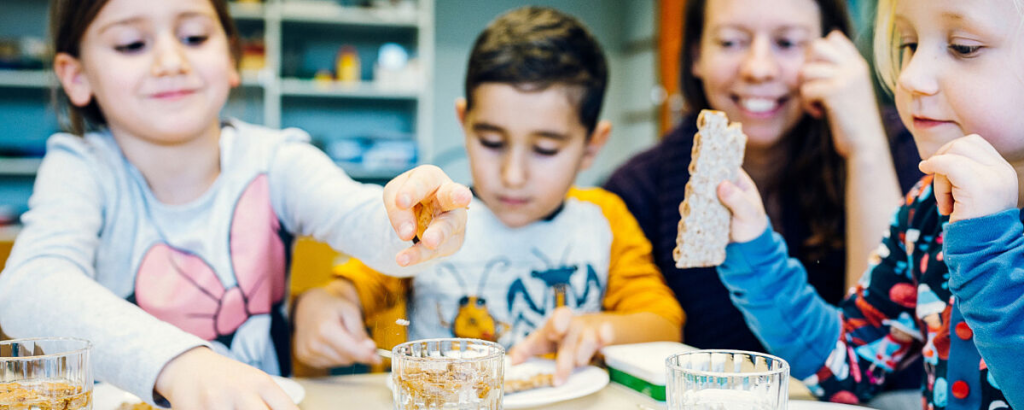
Little Scientists’ House (Non-Profit Foundation) in Germany
A little boy recalled that he once went to the beach. The wind stirred up the sea and sand. But there was no tree in his sight. Another boy said that a moving vehicle would make the leaves spin. Thus, the children concluded that trees are not the source of wind.
Although this science education project has been launched less than ten years ago, it has covered more than half of the children aged from three to six in Germany. In the Little Scientist’s House, the teacher asks children to ask questions about natural phenomena and daily observations. When children give naïve answers to these questions, the teacher will help them use activities to verify the answers to the questions.
The True Definition of STEM
The education circle refers to STEM as an interdisciplinary teaching content or mode. The following content will use the perspective of game programming and robotic programming to explore the correct definition of STEM.

STEM (Science – Technology – Engineering – Mathematics)
When we face a single subject, we can easily cite the content of related subjects. Science subjects do small experiments to understand various scientific principles, such as understanding the various forms of water. Technology subjects learn how to use related tools or platforms to achieve different effects through computers or ICT subjects, such as a computer.
The platform uses programming tools to draw a star. Engineering uses a combination of various hardware materials to design and create a work such as using wood or metal brackets to design a letterbox. Mathematics uses addition, subtraction, multiplication, division, proportion, and algebra. Learn all kinds of mathematics-related knowledge from the shallower to the deeper. And Art includes all kinds of music and painting training.
Since the focus of STEM education is an interdisciplinary teaching model, how can it be truly interdisciplinary? The following will illustrate three examples. The foundation of programming education is of course Technology. Students will use various platforms or tools to learn to program. If students want to use programming to create the effect of gravity in the game requires Science content.
Therefore, in learning, you need to explain the characteristics of gravity to your classmates, and will explain the principles of mechanics deeper. Besides, you also need the content of Mathematics. How to use mathematical formulas to make a character design by classmates The game world has sped up downwards and fell to the ground under the influence of gravity.
30 Ideas for Summer Science Experiments and STEM Activities
1. When the water bag meets the tip pen
The experimental materials include sharpened pencils and plastic food bags. First, fill a plastic bag with water and seal it with a zipper.
Then, the children can gently pierce with a pencil until they penetrate the two walls of the bag. It will surprise them to find that the water does not leak out. It is okay to insert a pencil.

The leakroof bag game
Source: https://www.stevespanglerscience.com/lab/experiments/leak-proof-bag/
2. When soda meets vinegar
You need edible baking soda, vinegar, detergent, a small bowl, a large plate, and practical coloring for this game. First, mix the baking soda and vinegar in a bowl. You see that the generated foam overflows the outside of the small bowl. It can only cover the bottom of the plate. And the foam will quickly disappear.
Next, the dishwashing liquid will come in handy. We use the same amount of vinegar and baking soda as last time, but adding a few drops of detergent to the baking soda water. It makes the situation completely different.
You find that the foam produced can almost cover the entire plate. And some foam will remain after being left for one minute. It would be better if you have practical pigments at school. Use this experimental procedure and you will see rainbow bubbles running out.

Source: https://www.wonderopolis.org/wonder/what-happens-when-you-mix-vinegar-and-baking-soda
3. When detergent meets starch
In this study, you need color detergent, corn starch, a bowl, and a small measuring cup. If we mix the water with starch, the noodles will come out. But what happens when the water is replaced with detergent?
Take an appropriate amount of starch and put it in a bowl. Slowly add detergent into the starch. Mix with a spoon and adjust the dry humidity. Then, add detergent if it is too dry or add starch if it is too wet Finally, the result is colorful plasticine.

Source: https://www.explainthatstuff.com/detergents.html
4. Gummy bears will grow up
The experimental materials include water, salt, and gummy bears. This experiment compares the changes of gummy bears in saltwater and white water. Which bowl of water does the same sugar grow up more?

Gummy bear experiment
Source: https://www.kiwico.com/diy/Science-Projects-for-Kids/3/project/Gummy-Bear-Science-Project/2782
5. Pepper magic
We need water, pepper, detergent or soap, and a flat-bottom plate. Take a flat bottom plate, spread water on the bottom of the plate, and spray pepper on the plate. The denser the pepper, the better the effect of this experiment.
Let the children move their hands on the plate first. Of course, no special phenomena will happen. Next, put a few drops of dish soap on your fingertips. And then move them onto the plate. The Pepper Magic appears and the pepper will avoid you.

Source: https://www.coffeecupsandcrayons.com/magic-pepper-and-soap-experiment/
6. Popcorn can dance
The experimental materials for this study include popcorn, baking soda, vinegar, water, and a jar. First, fill the jar with water and add a few drops of pigment. Add baking soda and stir evenly until they completely dissolve. Then add a handful of popcorn. Finally, add a few drops of vinegar. You will see the popcorn dancing up and down.
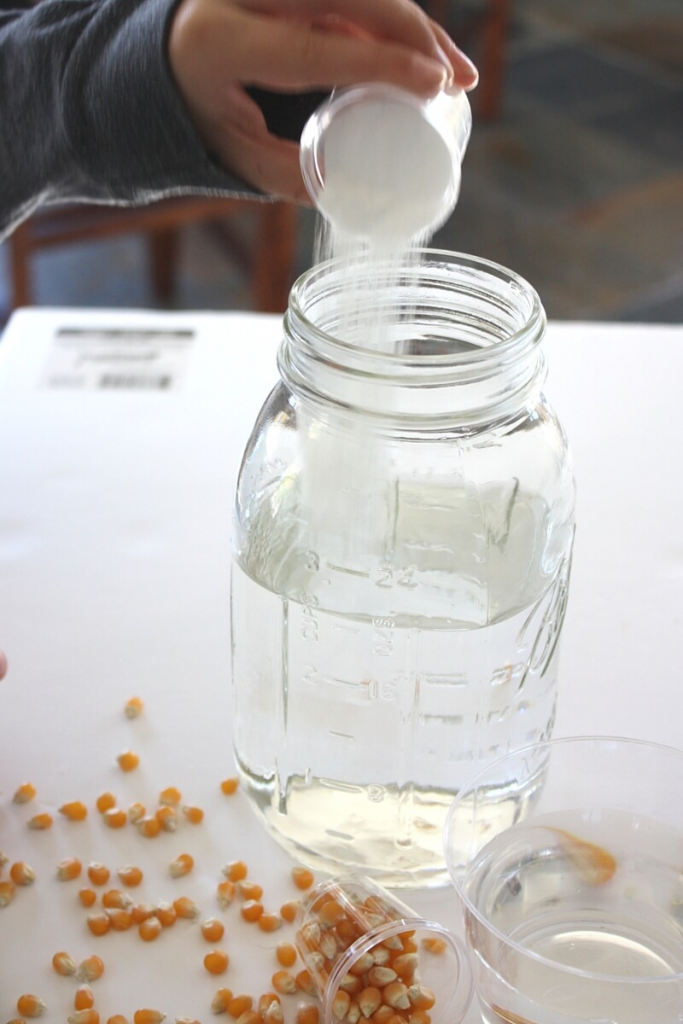
Source: https://www.steamsational.com/dancing-popcorn-experiment/
7. The balloon is blown up
For this experiment, we need baking soda, vinegar, an empty bottle, and a balloon. Add baking soda and vinegar to the bottle. Then, put the balloon in the bottle mouth. You find that it slowly fills the balloon with air. However, this balloon will not float. Think about it with your students.

Balloon blow up science experiment
Source: https://www.cmosc.org/balloon-blow-up-science-experiment/
8. Tornado in a jar
We need water, detergent, vinegar, and fluorescent powder. Put the concentrated materials into the jar, stir, and close the lid. You will see the whirlpool in the jar. It is that simple.
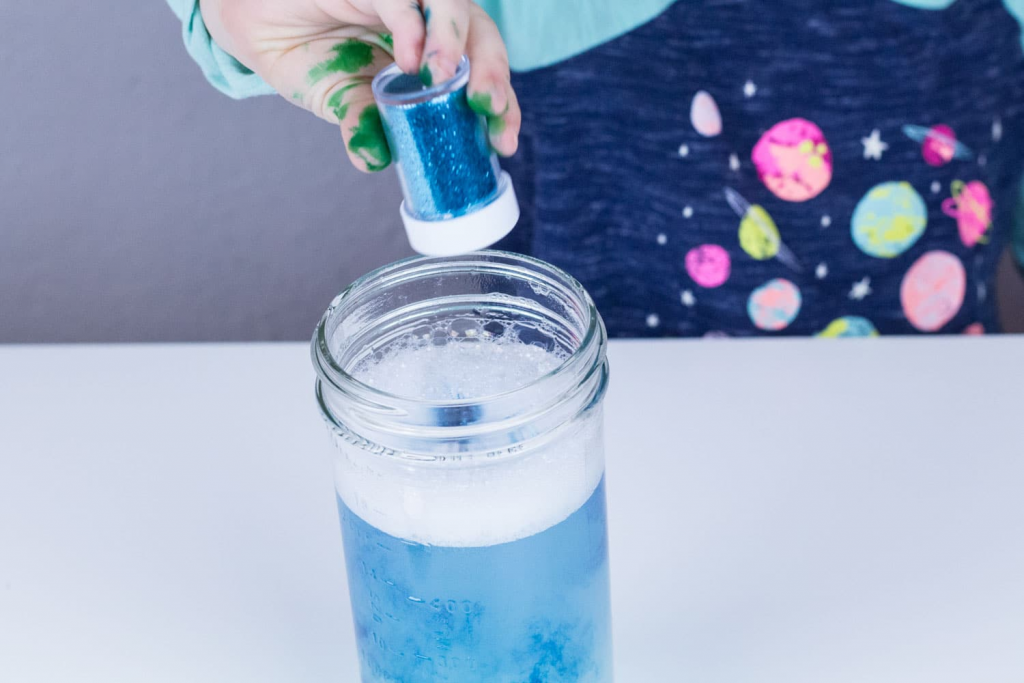
Source: https://www.steamsational.com/tornado-in-a-jar/
9. The orange floats
Prepare a high-neck cup, water, and an orange. An orange will sink to the bottom when thrown in water. But what happens if you put a peeled orange under the water and then put an unpeeled orange in it?
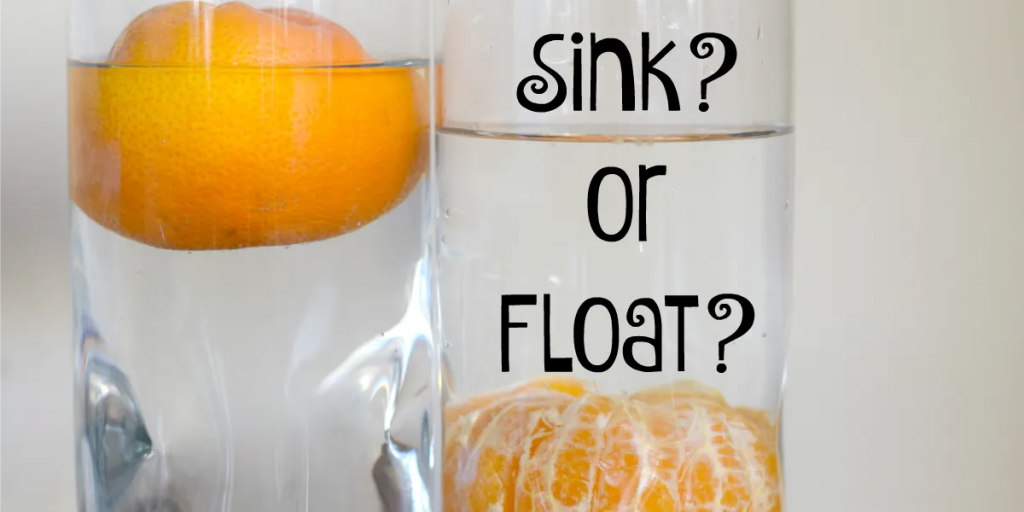
Source: https://coolscienceexperimentshq.com/why-does-the-heavier-orange-float/
10. How to finish a bottle of water faster?
We need two two-liter empty bottles, water, and a sink. They fill the same two bottles with water. Then, open the cap vertically downwards. How can the water be poured out faster?
It is straightforward. Just rotate the bottle body to make the water in the bottle spin and stay. It helps the air enter the bottle faster. And the water will naturally pour out faster.

Tornado in a bottle
Source: https://www.stevespanglerscience.com/lab/experiments/soda-bottle-tornado/
11. Balloon Racing
You will need toy cars, balloons, straws, clips, and tape. Make two balloon propulsion equipment as shown in the picture. This experiment is an example of Newton’s third law. The air blown into the balloon will propel the car in the opposite direction, just like a rocket. Blow the balloon and the game will begin.
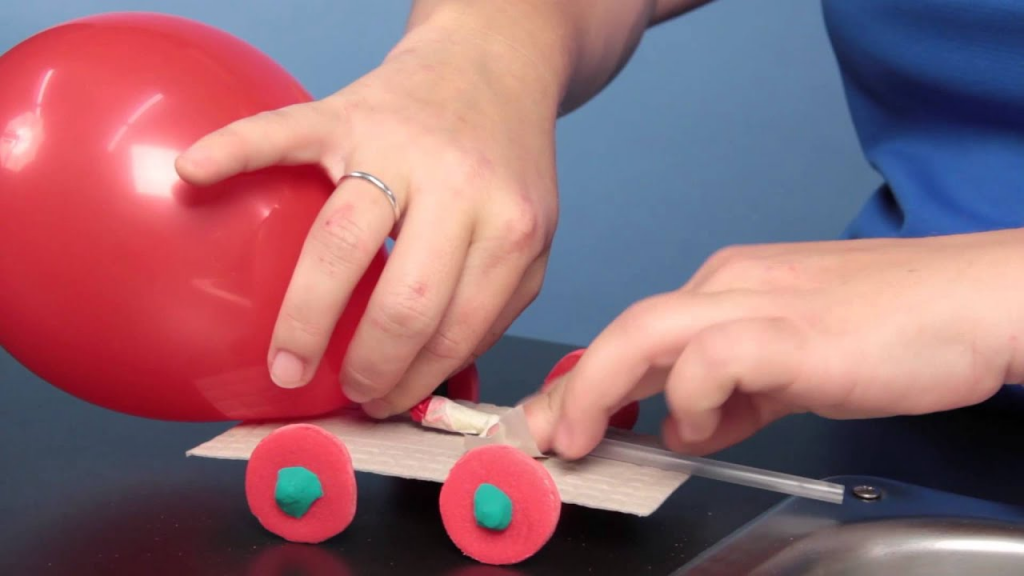
Source: https://www.steampoweredfamily.com/education/rudolf-balloon-race/
12. Making a bouncy ball
Experimental materials include borax, warm water, glue, practical pigments, and starch. First, mix borax with water. Then mix the glue with starch. As mentioned in the third experiment above, add your favorite color. Put the glue and starch mixture into the borax solution and let it stand for 10-15 seconds, then take it out. Finally, knead it evenly with your hands. And you are done.
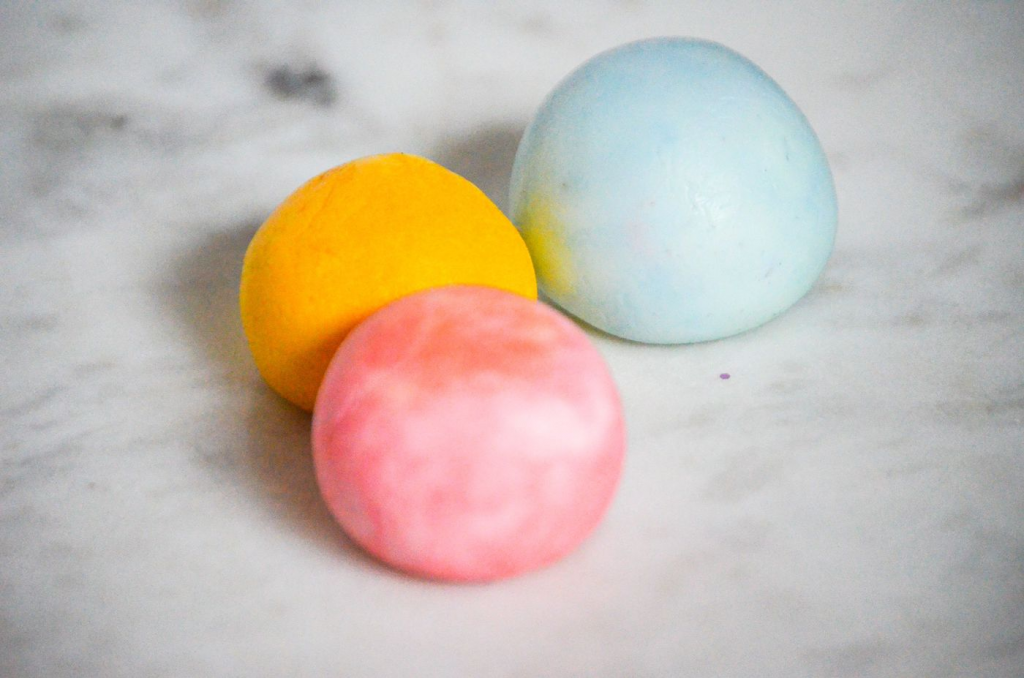
Source: https://www.boundlessbrilliance.org/brilliant-blog/2020/8/6/make-your-own-bouncy-balls
13. Coins in water
Pour a little water into the plate and put a coin. How can you take out the coin without touching the water with my hands, or pour the water out? The method is lighting a piece of paper. Then, put it in the glass and put the cup upside down next to the coin on the plate.
The water in the glass rose. And finally, all the water entered the glass gives up the coins. When a piece of paper burns, part of the heated and expanded air overflows from the water. After they place the cup upside down. The flame is extinguished because of a lack of oxygen, and it cools the gas in the cup.
So, the pressure drops. To maintain the pressure balance, the air with normal atmospheric pressure outside wants to come in. They squeeze the water on the plate into the cup.

Coin in water experiment
Source: https://www.rookieparenting.com/double-the-money-science-experiment/
14. Wind on the wall
If you remove the pictures hanging on the indoor wall, there will often be traces of picture frames where the pictures are hung on the wallpaper. The edge prints of these frames are especially clear on the outer wall. How did it happen?
These dark traces show that the temperature insulation between the corresponding wall, and the outside is very poor. The hot air that rises from the radiator and flows in the room will cool when it hits the wall and move toward the ground along the wallpaper.
If the wall behind the picture frame is freezing, condensation will occur there. The air passing by the wall leaves some moisture in the cooling process. The dust in the air stays here with it. Thus, forming the traces of this dark frame.

Source: https://sciencing.com/kindergarten-wind-activities-7857858.html
15. Bottle race
Two bottles of equal weight with sand and water roll down from a height. Who will reach the end first? For this experiment, you need two bottles of the same size and weight, sand, water, a rectangular wooden board, and two thick books.
First, use rectangular planks and two books to reach a slope. Then, pour water into another bottle, pour sand into the bottle. Put two bottles on a wooden board and roll them down at the same starting height. Finally, the bottle with water reaches the end earlier than the bottle with sand.
The friction of sand on the inner wall of the bottle is much greater than the water. And there will be friction between the sand. So, its sliding speed is slower than that of a bottle filled with water. You can change the substance in the bottle and let them compete.
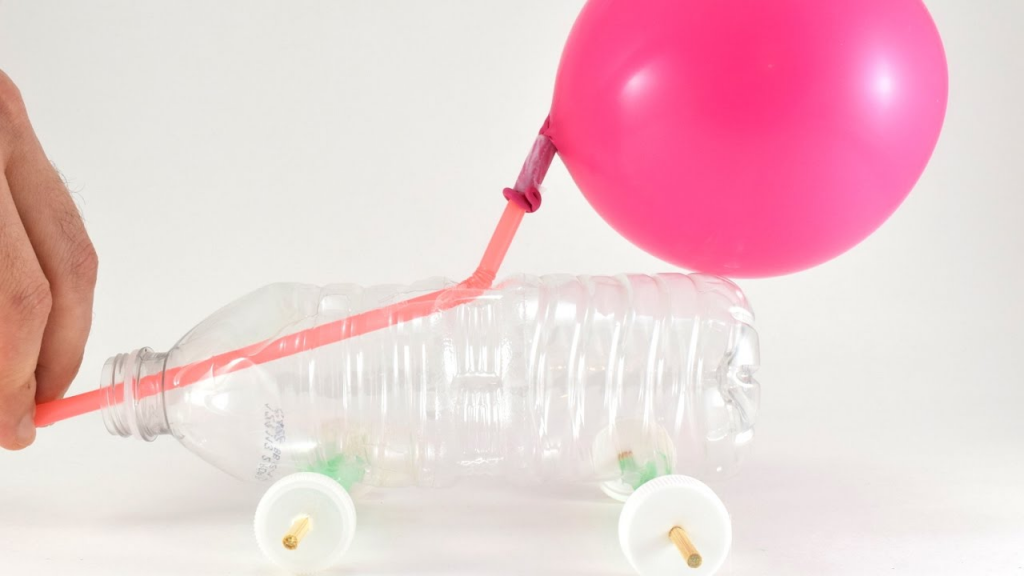
16. The candle cannot be blown out
Blow the burning candle hard, but you cannot blow it out. Do you know how to do this? For a solution, you need one candle, match, one small funnel, and a flat plate. First, light the candle and fix it on the flat plate.
Make the wide mouth of the funnel face the flame of the candle and blow vigorously into the flame from the small mouth of the funnel. Similarly, make the small mouth of the funnel face the flame of the candle and blow vigorously into the flame from the wide mouth of the funnel.
When blowing in this way, it will incline the flame to the wide end of the funnel. And it is difficult to blow out. If you blow from the wide end of the funnel, the candle will be easily extinguished.
When the blown gas is gradually evacuated from the narrow mouth to the wide mouth, the air pressure decreases. The gas around the wide mouth of the funnel will rush into the wide mouth of the funnel because of the powerful air pressure. Therefore, the flame of the candle will also rush to the wide mouth of the funnel. Pay attention to safety when the candle is burning.
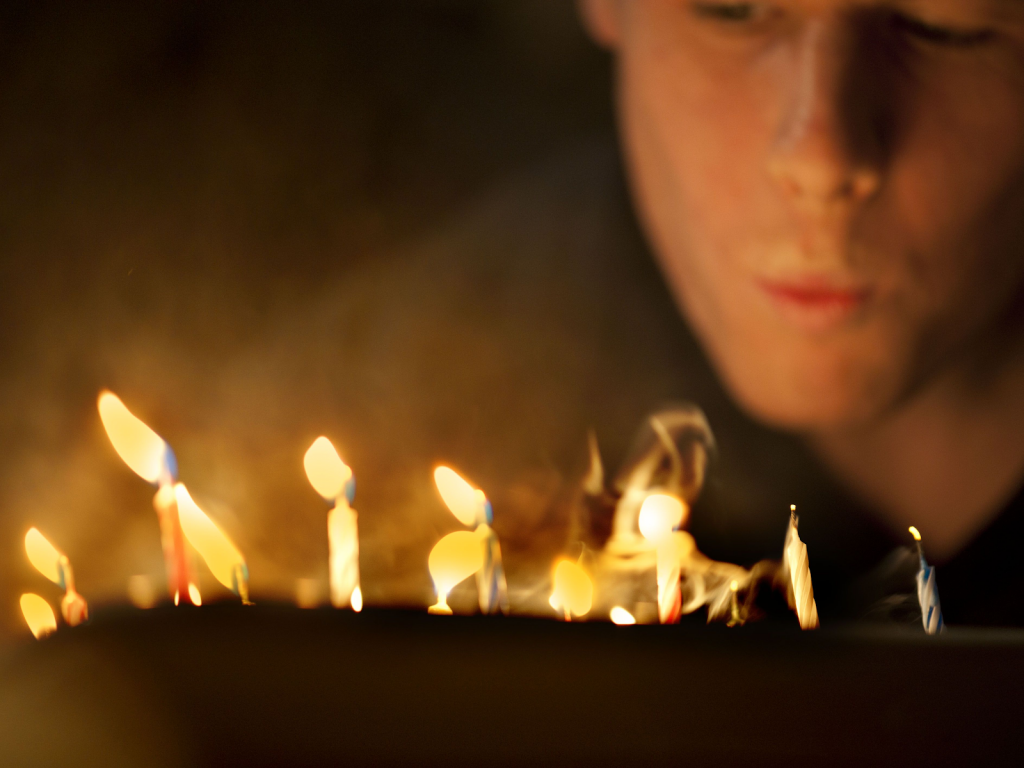
The candle cannot be blown out
Source: https://www.thebrickcastle.com/2018/08/5-minute-stem-activity-10-blowing-out.html
17. Discolored celery
The experimental materials include colored water and celery. You need the cup that contains colored water. Put the celery into the colored water. After three to four hours, the celery changed color. Plants also have small tubes like suction pipes. It can send water to the leaves of plants. It is the reason the celery changes color.

Source: https://www.generationgenius.com/activities/plant-parts-activity-for-kids/
18. Air cushion effect
Take a smooth tray and place it diagonally on an upright matchbox. Spread a little diluted detergent on the tray so that an inverted glass wine glass can be easily pushed down. How can you make the cup slide from top to bottom without touching it or blowing it?
Please take a lighted match close to the cup. The air in the cup heated and expanded. The cup is lifted by the increased air pressure like an air-cushion car. As the friction of the tray gradually decreases, it will slide down on its own.

Source: https://www.jpl.nasa.gov/edu/teach/activity/hovering-on-a-cushion-of-air/
19. Electrostatic balloon
Blow up the balloon, tie a knot to seal the opening. Then rub it on your sweater for a while. You will send them to the ceiling and they can stay there for a few hours. Through friction, it charges the balloon with static electricity. So, it receives the tiny negative electrons on the sweater.
They attach the charged balloon to the ceiling because of its negative pole and ceiling positive pole attract each other. It balances the electrons moving on the ceiling until the positive and negative. Since the ceiling is not an excellent conductor, the temperature can last for several hours in a dry and warm room before the balloon will fall.
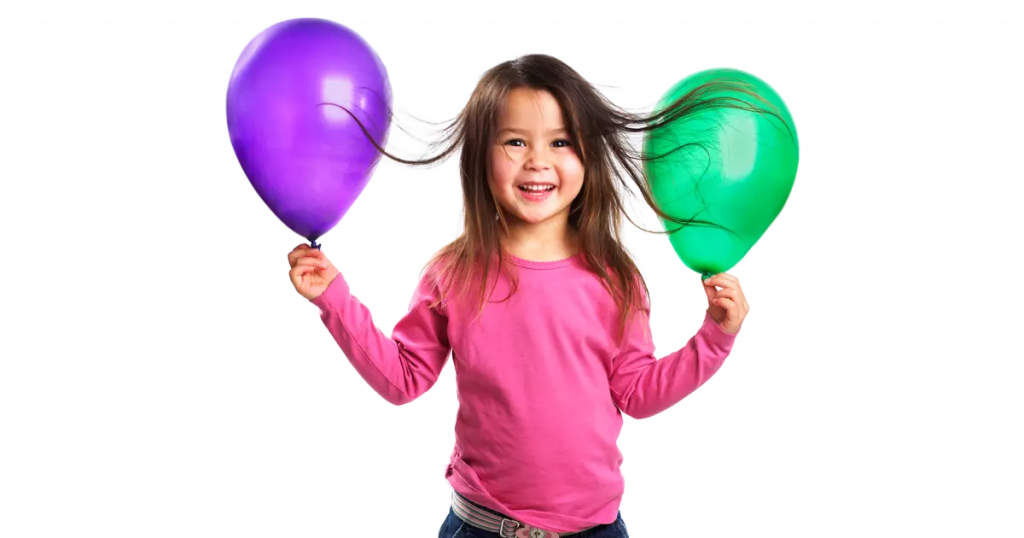
Electrostatic balloon experiment
20. Air tension
Take two porcelain egg cups and arrange them in a row. Put an egg in the front cup. Then, take a deep breath and blow vigorously against the edge of the egg cup. The egg will jump up, rollover, and fall into the cup behind.
The surface of the egg is mostly rough, and the porcelain cup is rarely very round. There will always be a gap through which air can enter the space under the egg. The air current will be compressed there. And if its tension is sufficient, the egg will float like a hovercraft.

Source: https://www.youtube.com/watch?v=azMwCrfdTD0
21. Charged balloon
What circumstances will two balloons attract and repel each other? To answer this question, you need two inflated balloons, one string, and one piece of cardboard.
First, inflate the two balloons separately and tie a knot in the mouth. Connect the two balloons with a wire. Use a balloon to rub on the hair or woolen sweater. Then, lift the middle part of the string and the two balloons separated immediately. Finally, place the cardboard between the two balloons. The electricity on the balloons causes them to be attracted to the cardboard.
The electricity on one balloon repels the electricity on the other balloon. The electricity on the two balloons causes them to be attracted to the cardboard. Can you use other small experiments to show that it charges the balloon?

22. Non-wet paper
A newspaper, soaked in water, will not get wet. Did someone use magic for him? Of course not, let us learn science easily from small experiments. Supplies needed are a newspaper, an empty glass, and a bucket full of water.
First, knead the newspaper into a ball and stuff it into a glass. Quickly put the glass filled with a newspaper with the mouth down and put it into the big bucket filled with water. After one minute, take out the glass and touch the newspaper in the glass.
The newspaper will not get wet. It turns out that the newspaper occupies the space in the cup. So, the space in the cup is small. And there is no space when water enters. As the cup is quickly inserted into the bucket, it will not get wet.

How to keep a paper dry under water?
Source: https://coolscienceexperimentshq.com/how-to-keep-a-paper-towel-dry-under-water/
23. Balloon catch cup
Do students believe that the cup can hold the balloon tightly? Preparation materials are plastic tea cups, boiling water, and balloons. Pour boiling water into the teacup and heat the teacup. Let the hot water stay in the cup for a while, then pour out the water.
Hurry and put the balloon on the teacup while it is hot. And press it gently with your hand for a while. After one minute, no matter how you lift the cup and move it. The balloon will not fall off. The cup is holding the balloon tightly. Lift the balloons and look, they are tightly attached.
What is going on here? It turns out that when the hot air in the teacup slowly gets colder. The pressure inside the cup is lower than the atmospheric pressure outside. So, it can suck the balloon up.

Source: http://www.vanillajoy.com/last-minute-halloween-party-idea-balloon-catch.html
24. Use the funnel to blow candles
When a friend celebrates his birthday. How to make blowing candles easier, the following experiment tells you. The experiment needs a plastic funnel, candles, and help from parents or teachers. First, put the candle on the table and help children light candles. The direction of the narrow mouth of the funnel facing your mouth.
The wide mouth of the funnel is 20 centimeters above the candle. Then start blowing and try the funnel in reverse. What did you find? When blowing from a narrow mouth, you find that the candle is difficult to blow out. The air is difficult to gather in the flame. But when the funnel was turned over, the air gathered at the flame, quickly cooling the flame and extinguishing it.

Source: https://www.hawaiinewsnow.com/story/11991968/weird-science-fun-with-a-funnel/
25. Freefall
What is falling fast? Is it tennis or golf? You might think the golf ball falls fast because the golf ball is heavier than the tennis ball. In the 16th century, a scientist named Galileo said that all objects on the earth fall at the same speed regardless of the weight of the object.
Experimental items include one metal food tray, two tennis balls, three golf balls, four feathers (optional), and five sturdy chairs or ladders. First, place the food pan on the floor in front of the chair or ladder. Play the role of sound amplification. Place the chairs and raise the golf ball and tennis ball to the same height.
Then release your hands at the same time. Who fell on the food tray first? Do you hear one sound or two sounds? If conditions permit, experiment again. This time, holding feathers and golf balls in both hands. Let go to see which one landed first.
Tennis and golf landed at the same time. The strong gravity of the earth makes them land at the same speed. Feathers fall more slowly than golf balls because the air resistance of feathers is greater than golf balls.
On the moon where there is no resistance from air, feathers, and golf balls land at the same time. In 1972, the astronaut Griggy Scott officially launched this experiment.

Freefall experiment
Source: https://www.adabofgluewilldo.com/science-activities-for-kids-free-fall/
26. Explore the hardness of eggshells
Are eggs hard to crush with one hand? When you squeeze an egg with one hand, it disperses the pressure you provide across all parts of the egg. But if you knock the egg with a sharp object, it is easy to crush it. We will concentrate on the pressure on the egg.
Life first was in the ocean, because protecting eggs made it possible for animals to live on land. First, keep your hands clean, remove the ring and jewelry. Put the egg flat in your hands and squeeze it hard.

Source: https://www.agriculturejournals.cz/publicFiles/190136.pdf
27. Fire extinguisher
Put a small piece of used candles into a water glass and light it. Put a tea soup of sodium bicarbonate in the second cup and a little vinegar. The white powder bubbled, showing that gas was being produced. Gently pour the foam in the cup toward the candle. And the candle will go out immediately.
In this chemical reaction, it produces invisible gas carbon dioxide. It is heavier than air. So, it sinks to the bottom of the cup when it is turned upside down. Besides, because it is a non-flammable gas, it suffocates the flame like a fire extinguisher. It composes the foam that emerges from countless small bubbles containing carbon dioxide. They surround the flame and block oxygen from entering. Finally, the flame goes out.
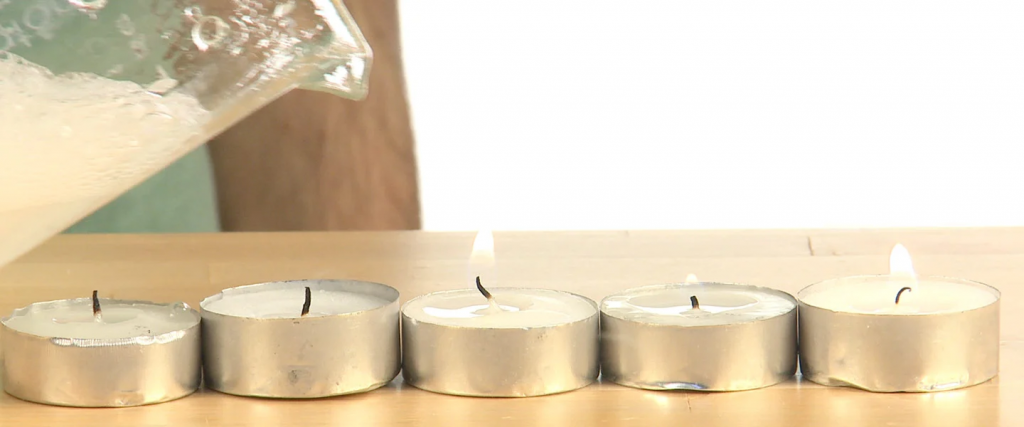
Source: https://scienceexplorers.com/diy-fire-extinguisher-experiment-for-kids/
28. Sugar cubes that burn
Take a sugar cube and place it on the lid of a metal box. Do not use a match to test whether we can ignite it. But if you put a little cigarette ash on one corner of the sugar cube, then put a burning match here, the sugar cube will immediately emit a blue flame and burn until it melts completely.
Although cigarette ashes and sugar cubes cannot be ignited alone, soot can trigger the burning process of sugar cubes. A substance that can start a chemical reaction but does not change itself is called a catalyst.
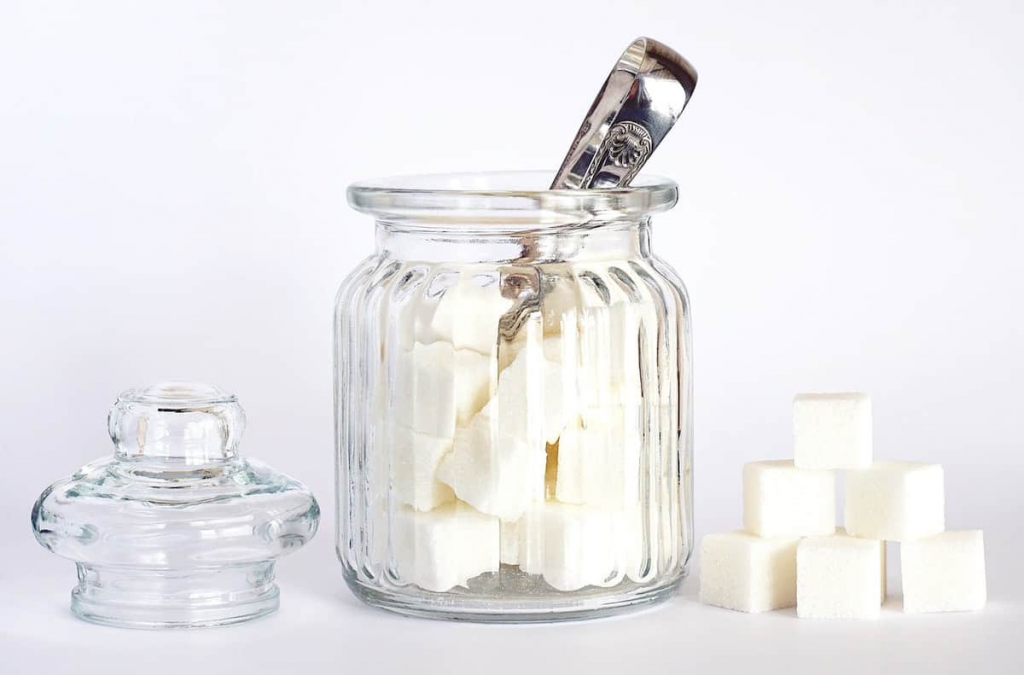
Sugar experiment
Source: https://bizarrelabs.com/sugar.htm
29. Electric snake
Cut a 10 x10 cm spiral paper snake with cotton paper. Place it on an iron cover. And pull the snakehead up. Rub a pen with a woolen cloth and place it above the head of the paper snake. The paper snake would straighten up like a living reptile and continue to dash upwards.
In this experiment, it charged the pen with electricity through the friction of the wool cloth. It attracts uncharged paper snakes. Each contact will bring a part of the electricity again. But it will be immediately led off by the conductor’s iron cover. Then, the uncharged paper snake will be attracted again until the pen loses all its static electricity.
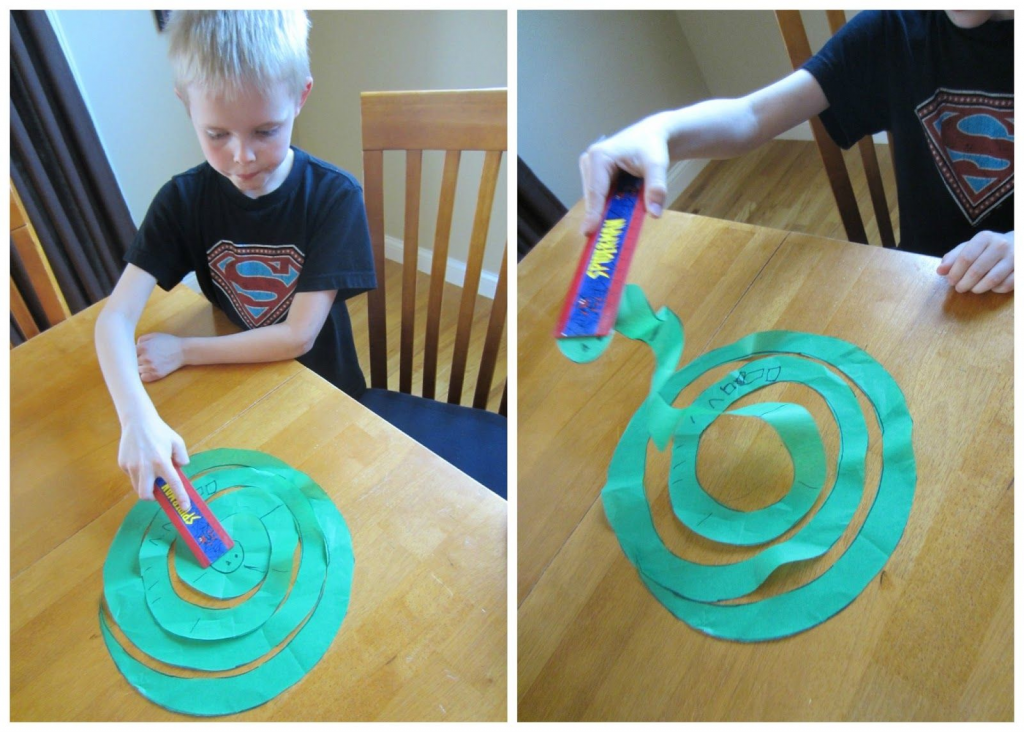
Source: https://kidsactivitiesblog.com/26633/static-electricity-3
30. Match lift
Supply needed is a box of matches. Several matches placed side by side on the table can be carried into the matchbox by breathing. Clamp the matchbox cover with your lips. Drop it in a row of matches. And take a deep breath. The matches will be attached to the box cover as if they are posted. Let your lift and transport it away.
As long as you observe in life, you can also find such a phenomenon. It reveals the principle that by inhaling, the air in the box sleeve becomes thinner, resulting in low air pressure. The normal atmospheric pressure outside pressed a row of matches against the bottom opening of the box cover. If you take a breath, it can suck even a single match up.
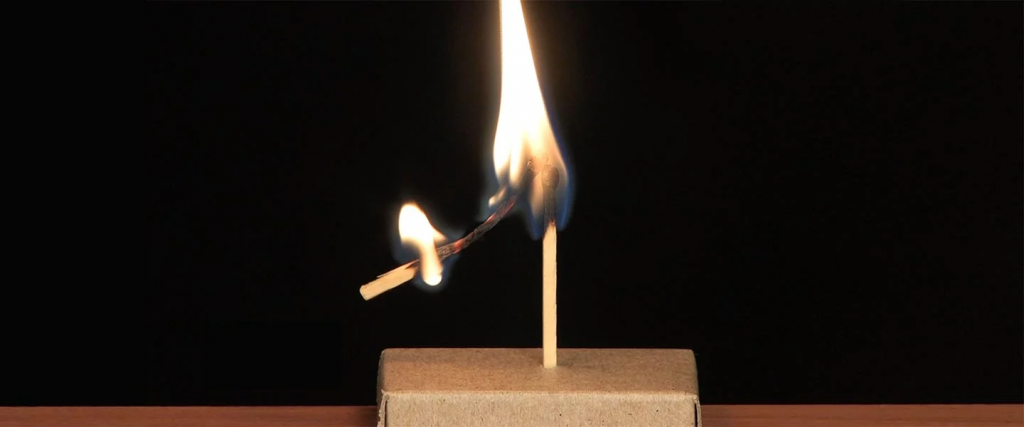
Match experiment
Source: https://www.stevespanglerscience.com/lab/experiments/match-levitation/
Final Thought
It is a good thing for young children to love to explore. The key is that teachers or parents do not obliterate young children’s interest. The above scientific experiments for children are derived from some common scientific phenomena in children’s lives, such as coins in the water, the difficulties of eggs, discolored celery, balloon-catch cups, neon-soaked paper, electrostatic balloons, fire extinguishers, and principles of vacuum cleaners.
We advocate the cultivation of children’s innovative thinking. Through the promotion of high-quality STEM educational resources and services, they commit us to inspire parents and children to learn and grow together in play and create the joy of imagination with both hands.

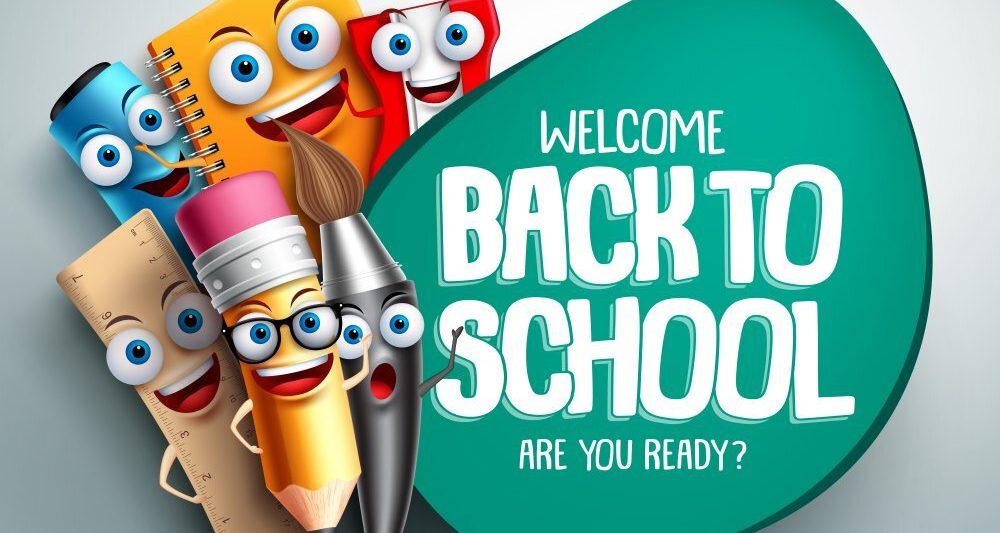
 Elf On The Shelf Ideas: Easy-To-Make And Fun
Elf On The Shelf Ideas: Easy-To-Make And Fun
Leave a Reply